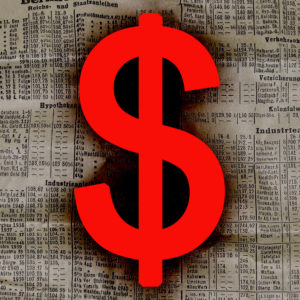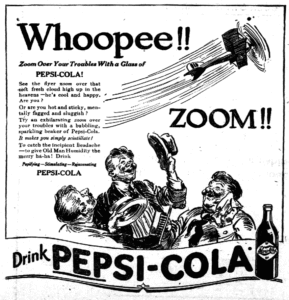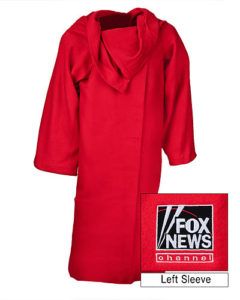The business of publishing, Part 2
 This post is about how to pay for journalism. SPOILER ALERT: I do not solve the equation and save the business.
This post is about how to pay for journalism. SPOILER ALERT: I do not solve the equation and save the business.
While I was preparing to teach a course on the business of (journalism) publishing, smart people advised me to forget a textbook. Instead, they said, use the news. Riff off industry developments. I created a framework to hang my riffs on. In a previous post, I covered the many costs of doing journalism. Now: All possible ways to pay for it.
SUBSIDIES
Public relations and advertising are (more or less) subsidized communications, paid for by someone who wants to send a persuasive message. Journalism theoretically is different: communicating the truth without bias. The line blurs when the money comes from these sources:
- Political. Party subsidies were standard for early U.S. newspapers. Laws specifying requirements for acceptable publication of legal notices are a form of political subsidy; newspapers get very touchy when governments seek other ways to ensure public access. Political advertising can amount to a subsidy when payment far outweighs likely value.
- Commercial. Airlines distribute glossy magazines to polish their brands. If the journalism is about your own product, it also provides a powerful rival to independent sources, as the Kentucky Derby and other sports ventures realize.
- Vanity. Charles Foster Kane disgusting Mr. Thatcher by writing that “it would be fun to run a newspaper“? Definitely. Jeff Bezos buying the Washington Post? Quite likely not. Vanity money is spent without thought for financial return.
- Civic. The news media think of themselves as doing public good. Organizations devoted to the public good may put money down on the proposition. The Philadelphia experiment — putting two newspapers and a website under a charitable umbrella — is an example. Public radio and TV have been around awhile.
- Organizational. Membership organizations that produce magazines or websites are subsidizing journalism; dues spent on the sites and publications could go to other services.

Ah, for the old days when advertisers had little way to know if they were getting their money’s worth from ads.
ADVERTISING
The list runs vaguely from least to most ethically troubling for journalists. You may see different labels used by different sources.
- Classifieds. Shunted into their own section, each ad may focus on just one item. Customers have to go looking for the ads. Rural radio, at least formerly, offered a similar service for bartering.
- Inline advertising. In newspapers, “display ads” run amidst the news. Most TV commercials are similar. This advertising exists alongside journalism and basks in its glow, but is distinct in style and message. It comes in two types. Some are designed mostly to sell; others — Coca-Cola’s Christmas bears — make you feel good about the company in general.
- Sponsored content. An advertiser pays for, but does not (theoretically) control the content, which is otherwise identical to unsubsidized journalism. “Sponsored content” is supposed to work like the Coca-Cola bears, but more subtly. Where do you draw the line: Does the sponsor get to define the general topics that are covered? Particular issues? Sources?
- Native advertising (also advertorial). This looks like journalism but is created (perhaps by advertisers themselves) to drive purchases. Infomercials fit here.
Print journalism, particularly newspapering, has the unique form of insert advertising. These separately printed flyers used to make Sunday papers weighty. Newspapers also use existing delivery apparatus to put inserts on the lawns of entire communities, not just subscribers.

Surely a coincidence that most photos of newspaper readers online feature white-haired seniors. (Photo by Pedro Ribeiro Simões, CC 2.0)
AUDIENCE
How to squeeze money out of your audience:
- Purchase per use. Buy a magazine at the newstand, or use an online platform such as Blendle to buy an article at a time.
- Subscription. Paying in advance allows journalism producers to budget and plan more efficiently.
- Donate one time. If you have to fork over to get the content, it’s a purchase; if not, donation. Put crowdsourcing through sites such as Kickstarter in this category. Also include forced donations, such as college activity fees that fund student media.
- Donate as a continuing sponsor. If you can be persuaded to sign up for regular payments, you’re likely to give more.
- Pay with data. Fill out a registration form, accept a tracking cookie, use a mobile device that transmits your location and other information? You’re paying, just not with cash.

Somewhat surprisingly, Fox News expects its viewers to wrap themselves in this “TV blanket” rather than, you know, the flag.
MERCHANDISING
Assume journalism is your main mission. Use “merchandising” to label anything else you sell, or any sale that’s not to your audience. (Advertising is a separate category because it’s bundled with the journalism.)
- Repackaged content. Sell a photo print to someone who wants to hang it on their wall. Sell a package of your foreign reporting to other media outlets.
- Branded items. Viz the New York Times BBQ tool set.
- Events. A standard model for trade publications was to give magazines away to everyone in the industry, making money on advertising and trade shows.
- Special access. Journalists have access to newsmakers; other people want it. Seems like a business opportunity? It is, though you may need to check your ethics at the door. If you can’t persuade actual important people, you can sell yourself and your staff.
- Other stuff. Wonkette will sell you a T-shirt showing Hillary Clinton cutting off Donald Trump’s head. It has the Wonkette label, but the art appears to have been created with sales, not editorial use, in mind. Less directly, journalists can establish relationships with Amazon and other online sellers that give them a cut of sales from links and recommendations. (Cough, like here, cough.)
Lately, journalism operations have pitched “memberships.” They combine some audience transaction, either subscription or donation, with discounts, special access and events. Many seem to be nothing more than relabeled versions of old offers. If media outlets offer real memberships that include more involvement of the individual with the organization — a say in priorities, a voice in editorials — that would be worth its own category.
INVESTMENT
Subsidizers want intangibles. Investors want their money back and more.In the long run, they aren’t helping pay for journalism; they’re providing runway to the point at which profits take off and journalism can pay for itself. (Hat tip to my friend Curt Chandler for talking me through most of this.)
- Friends and family. They may not give you much, but they don’t expect much in return.
- Angel investors. When you need serious money, you beseech angels. These are often retired pros who don’t want to let go. They expect an equity stake, often along with a seat at the table — at least to be consulted on key decisions.
- Venture capitalists. When the money needed stretches to seven digits and beyond, it becomes a more cold-hearted calculation. Venture capitalists make major investments in return for a major ownership share. While VCs may also offer advice, their driving motivation is a big return. Knowing that most of their investments will flop, they invest only in ventures with potential for explosive returns.
- Bigger fools. You can retroactively pay for journalism by finding a buyer more deluded than yourself about the possibility of future profits.
As I warned, I don’t have solution to save journalism. Instead, I’ve labeled the variables on both sides of the equation. I’ve defined the limits of the possible.
